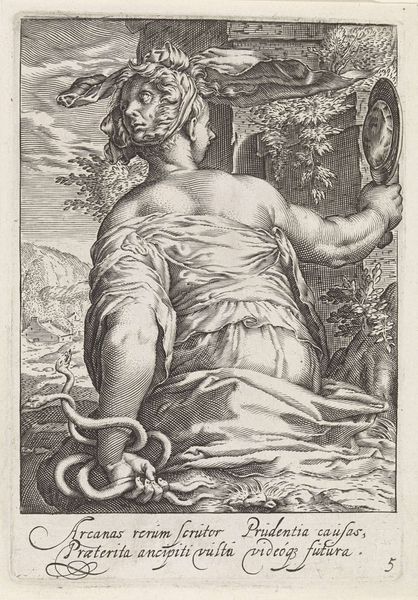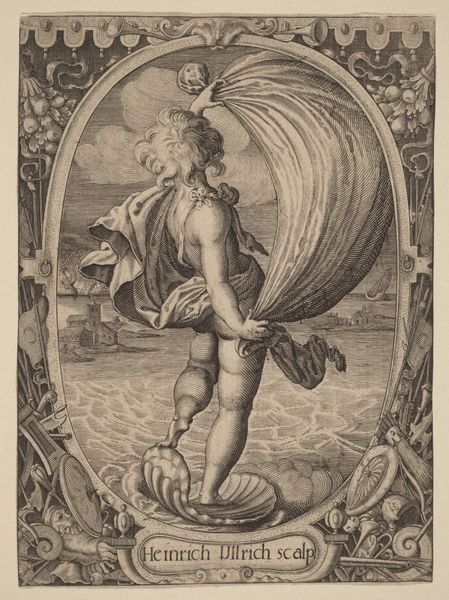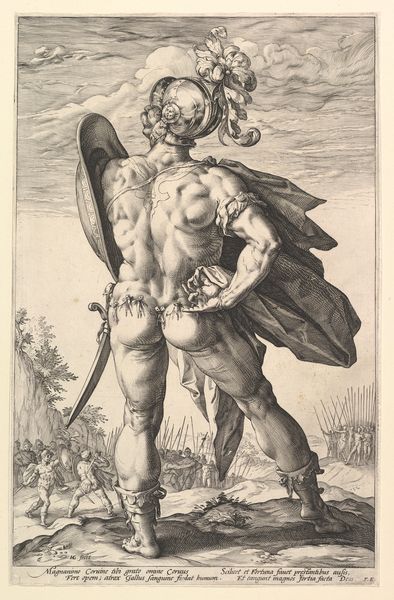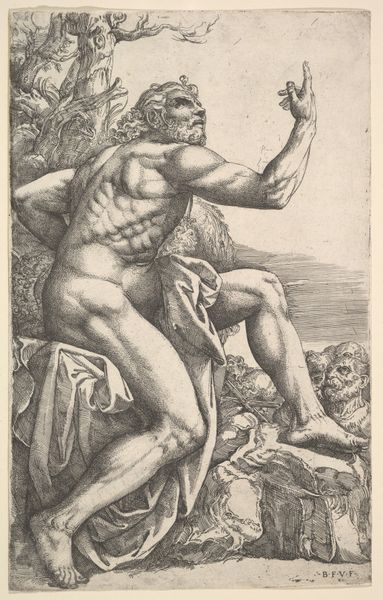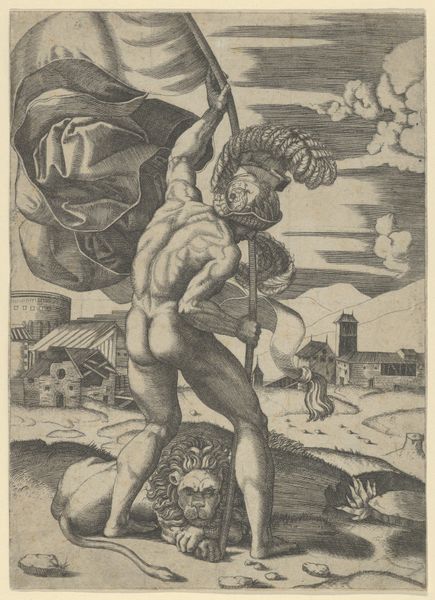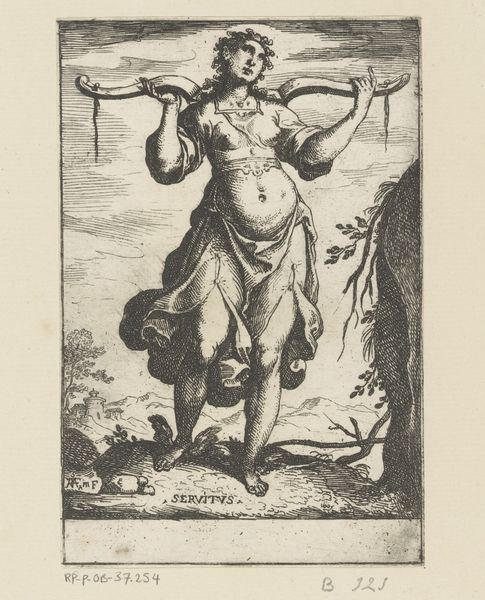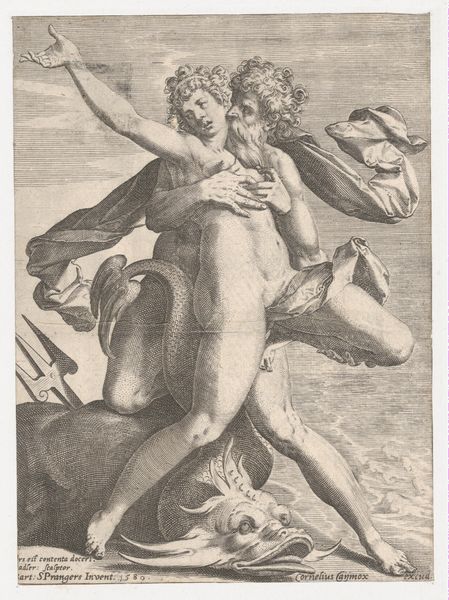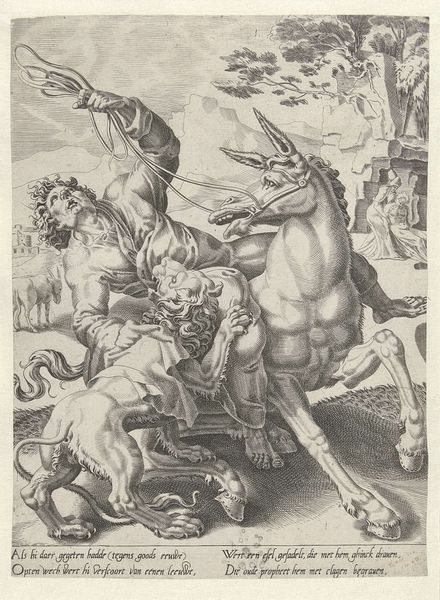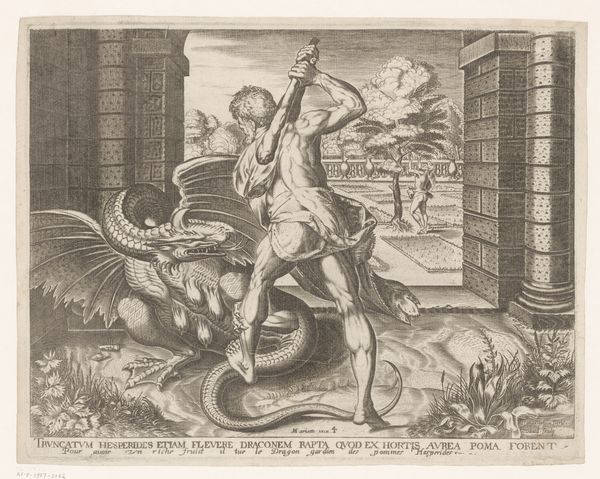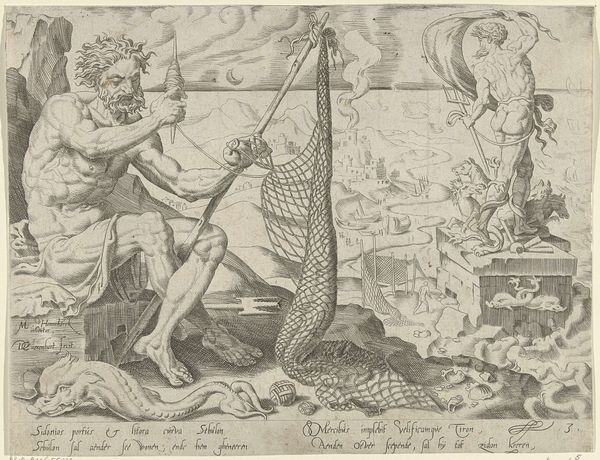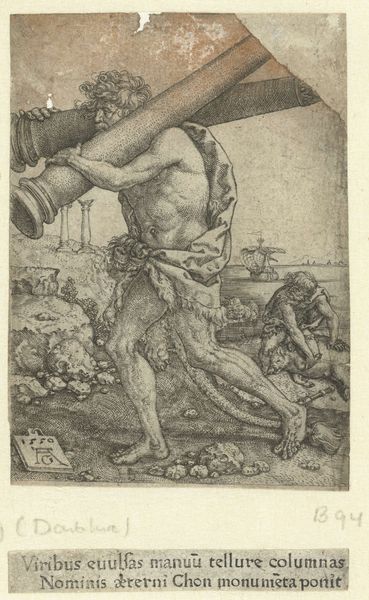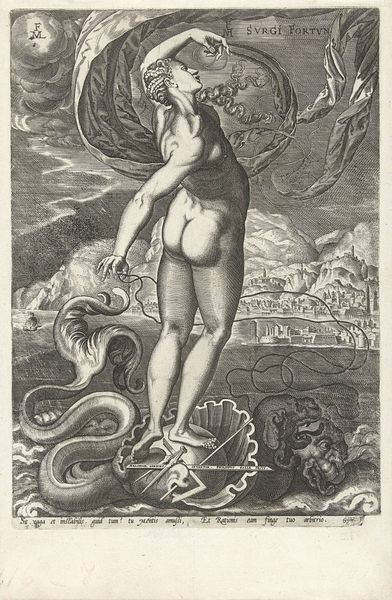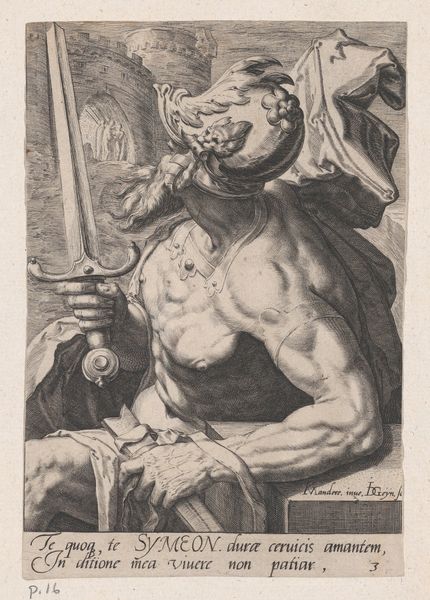
Water (Phlegmaticus), from The Four Temperaments 1596 - 1597
0:00
0:00
drawing, print, etching
#
portrait
#
drawing
# print
#
etching
#
mannerism
#
figuration
#
men
#
portrait drawing
#
history-painting
Dimensions: Sheet: 9 × 6 11/16 in. (22.9 × 17 cm)
Copyright: Public Domain
Curator: This etching by Jacques de Gheyn II, created between 1596 and 1597, is titled *Water (Phlegmaticus), from The Four Temperaments.* It's currently housed in the Metropolitan Museum of Art. What's your initial reaction? Editor: The tonal range here is subtle. De Gheyn masterfully uses line to create depth, light, and shadow, drawing the viewer into this waterside scene, but it projects a feeling of discomfort with that cluster of snakes in the large basket. Curator: Indeed! It stems from a cultural tradition that considered the four temperaments as a form of characterology or personality theory that was predominant throughout medieval Europe. In this tradition, the "phlegmatic" personality was connected to the element of water. Editor: You can see that in the details. The artist is using water symbolically to represent a particular psychological state or "temperament". Do you think it really works? Curator: Absolutely! Fish and snakes coming out of the basket would then symbolize certain characteristics of the phlegmatic personality, seen as listless, cold, slow and stolid, though reasonable and agreeable, just like one associates water. And what about that shipwreck in the background? Editor: Oh, right, I missed that before! It speaks to a world of emotional risk. Even if "reasonable," one still navigates choppy waters, so to speak. But that foregrounded figure: there's a deliberate formal relationship between his coiled, stringy locks and the cluster of serpentine life, making for an intentional thematic composition. Curator: I think you’re onto something. These figures recur again and again in art, taking slightly different forms. It gives one hope about certain symbolic motifs transcending their time period. Editor: For me, the work makes a forceful demonstration of the power of etching. Its linear precision communicates a remarkable psychological dimension. It reveals an almost taxonomic urge to map emotional terrain, just like any other territory. Curator: It does feel connected to traditions that come before it. It offers a connection between us and those who tried to understand themselves in relation to their emotions. Thank you for walking through that with me! Editor: A fruitful exchange, indeed. It shows that even in seemingly antiquated ideas like the Four Temperaments, there’s an opportunity for profound formal analysis and a means to connect past with present.
Comments
No comments
Be the first to comment and join the conversation on the ultimate creative platform.
